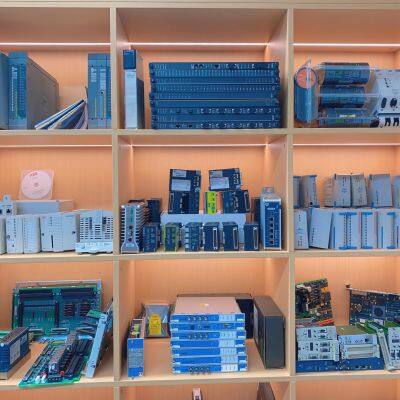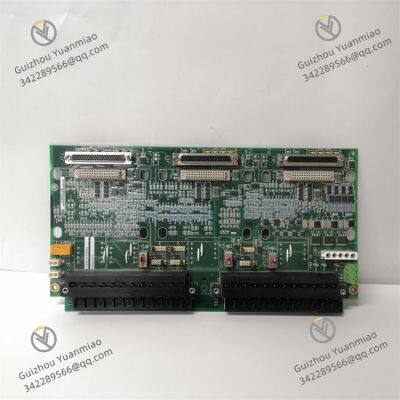Product Description
I. Overview
GE IS200TSVCH2ADC is an optically isolated transformer module applied in the fields of industrial automation and energy management, and it occupies an important position in the Mark VI series control systems. With General Electric's profound technical accumulation, it has become a key component in industrial control systems due to its high-precision measurement, stable and reliable performance, and excellent remote communication capabilities, providing accurate signal processing and data interaction support for various complex industrial scenarios.
II. Technical Parameters
Input voltage: The working voltage is 80V, and it can operate stably within a certain range of voltage fluctuations, adapting to situations where there are certain voltage fluctuations in some industrial sites, and reducing the impact of voltage instability on module performance.
Communication interface: It supports the RS-232 interface and the Modbus protocol. The RS-232 interface can be used for communication connection with some traditional equipment, and the Modbus protocol, as a widely used standard protocol in the field of industrial communication, ensures its data interaction compatibility with many industrial equipment and control systems.
Temperature range: The operating temperature range is between -20°C and 70°C. It can work normally in cold outdoor industrial facilities, such as outdoor energy monitoring stations in winter, and high-temperature industrial production workshops, such as steel smelters and glass factories, showing strong environmental adaptability.
Number of channels: There are a large number of analog input channels. As mentioned earlier, it can provide eight analog temperature input channels to connect to ICTD, and can support up to 128 analog input channels (the specific number depends on the configuration) to meet the signal acquisition needs of industrial applications of different scales and types.
Resolution and accuracy: The resolution of the analog input channel reaches 0.017°C, and the accuracy is ±0.8°C, ensuring that the collected analog signal data such as temperature is accurate and reliable, and providing strong support for precise control in industrial production.
Protection level: The protection level is IP20, which can effectively prevent solid foreign objects with a diameter larger than 12.5mm from entering the module, providing a certain degree of protection for the internal precision circuits. It is suitable for general industrial environments and can work stably in scenarios with less dust and small particle impurities.
Origin and size: It is produced in the United States and adopts a standard DCS module size design, which is convenient for installation together with other standard-compliant industrial modules in industrial control cabinets, equipment racks and other spaces, facilitating the construction of compact and efficient industrial control systems.
Installation method: It adopts the DIN rail installation method, which is a commonly used installation method in the field of industrial automation. The installation process is simple and fast, and the module is stable and reliable after installation, facilitating rapid deployment and later maintenance and replacement in industrial sites.

III. Core Functions
Multi-channel analog signal processing: It has a powerful multi-channel design. On the one hand, it provides eight analog temperature input channels, which can be conveniently connected to standard Integrated Circuit Temperature Devices (ICTD) to accurately capture changes in temperature signals. On the other hand, depending on different configurations, it can support up to 128 analog input channels, greatly expanding the application range. It can perfectly adapt to both the precise control of small industrial equipment and the comprehensive monitoring of large industrial production lines. For example, complex industrial processes such as thermoforming, water treatment, refrigeration, curing, and refining, as well as PID loop control scenarios, can all achieve efficient data collection and signal transmission through these channels.
High-precision measurement: It performs excellently in terms of measurement accuracy, with a resolution of up to 0.017°C and an accuracy maintained at ±0.8°C, and a sensitivity of 1.0 mA/°C. Such high-precision indicators enable it to provide extremely accurate data in tasks such as temperature measurement, laying a solid data foundation for process control and equipment monitoring in industrial production, ensuring that the production process operates strictly in accordance with preset parameters, and improving the stability and consistency of product quality.
Optical isolation ensures system stability: Similar to all SNAP analog modules, this device has the characteristic of optical isolation, which can effectively isolate itself from connected equipment and other modules on the shared I/O rack. This optical isolation technology is like a solid barrier, which can block the spread of electrical interference, prevent chain reactions caused by equipment failures in one place, and greatly improve the stability and reliability of the entire system. It is especially suitable for industrial environments with a large number of electrical equipment and complex electromagnetic interference.
Convenient on-site equipment connection: The wiring design for on-site equipment adopts a user-friendly and efficient method. The wiring with on-site equipment can be completed through 8-pin connections on two pluggable terminal blocks on the top of the module. This design significantly simplifies the equipment installation and maintenance processes, reduces installation errors and maintenance difficulties caused by complex wiring, and makes it easy to complete installation and subsequent maintenance operations even in industrial control cabinets with limited space and high wiring requirements.
Relay function conforming to NAMUR standards: It integrates a relay function that complies with NAMUR standards. This function allows the device to remotely transmit two concentration alarm levels, as well as messages about required maintenance, ongoing services, and instrument faults. With this function, operators can timely grasp key operating status information of the equipment without being present at the equipment site, quickly respond to equipment faults, arrange maintenance work, effectively improve the operational management efficiency of the equipment, and reduce the risk of equipment downtime.
Comprehensive communication functions: It has extremely comprehensive communication capabilities, supporting the Modbus protocol. It can perform remote communication and equipment inquiry through the RS485 interface, realizing seamless data interaction with other devices that follow the Modbus protocol, and facilitating the construction of distributed industrial control systems. At the same time, Ethernet connection is also optional, which provides convenience for its integration into larger-scale industrial automation systems, meets the needs of equipment interconnection and centralized management and control in the Industry 4.0 era, and improves the intelligence level of industrial production.

IV. Common Faults and Solutions
Communication failure
Fault phenomenon: The communication between the module and other equipment is interrupted, unable to transmit data, and the control system displays communication abnormalities, such as Modbus communication timeout, RS-232 communication connection failure, etc.
Possible causes: Loose or damaged communication cables, such as oxidized connectors, internal wire breakage caused by external pulling of the cable; hardware failure of the communication interface, damaged communication interface chips of the module or connected equipment; incorrect communication parameter settings, such as mismatch of baud rate, data bits, stop bits, parity bits with other equipment, or Modbus address conflict.
Solutions: First, carefully check the communication cable, re-plug the connector to ensure a firm connection, and replace the cable in time if it is damaged. Second, the replacement method can be used to connect the module to other normally working communication interface equipment to determine whether it is a module communication interface fault. If it is an interface hardware problem, contact professional maintenance personnel for repair or replacement of the module. Finally, carefully check the communication parameter settings to keep them consistent with those of other equipment in the communication network to avoid parameter conflicts.
Abnormal measurement data
Fault phenomenon: The analog signal data such as temperature collected by the module deviates too much from the actual value, or the data fluctuates abnormally and unstably, affecting the normal control of the industrial production process.
Possible causes: Sensor failure, such as damage or aging of the temperature sensor, resulting in inaccurate output signals; failure of the signal conditioning circuit inside the module, leading to deviations in the processing of signals input by the sensor; influence of external interference, such as strong electromagnetic interference and excessive power supply ripple, causing interference during signal transmission.
Solutions: First, check and calibrate the sensor. Use standard calibration equipment to calibrate the sensor. If it still cannot return to normal after calibration, consider replacing it with a new sensor. Then, check the signal conditioning circuit inside the module. For personnel with certain electronic maintenance capabilities, they can detect key components in the circuit, such as resistors, capacitors, operational amplifiers, etc., to determine whether there is damage, and replace the damaged components in time. At the same time, check for external interference sources, take shielding measures for communication cables, keep away from strong electromagnetic interference equipment such as large motors and frequency converters, improve power quality, and add power filtering devices to reduce power supply ripple interference.


mvme162-031 VME bus single board computer
GE IC698RMX016-ED Redundant Memory Module
GE IC698CRE030-DE Redundant CPU Module
HONEYWELL FC-RUSSIO-3224 Controller module
GE IC698PSD300C Power Module
GE IC698PSA350E Power Module
HONEYWELL FC-USI-0001 Universal Security Interface Module
GE IC695CPE310-ABAB Analog I/O Module
GE IC695CPU320-CF Power Module
HONEYWELL FE-USI-0002 Universal Security Interface Module
GE 531X306LCCBAG3 Ethernet port Module
GE 531X301DCCAFG2 Drive Control Card
 yezi
Hi there! Welcome to my shop. Let me know if you have any questions.
yezi
Hi there! Welcome to my shop. Let me know if you have any questions.




